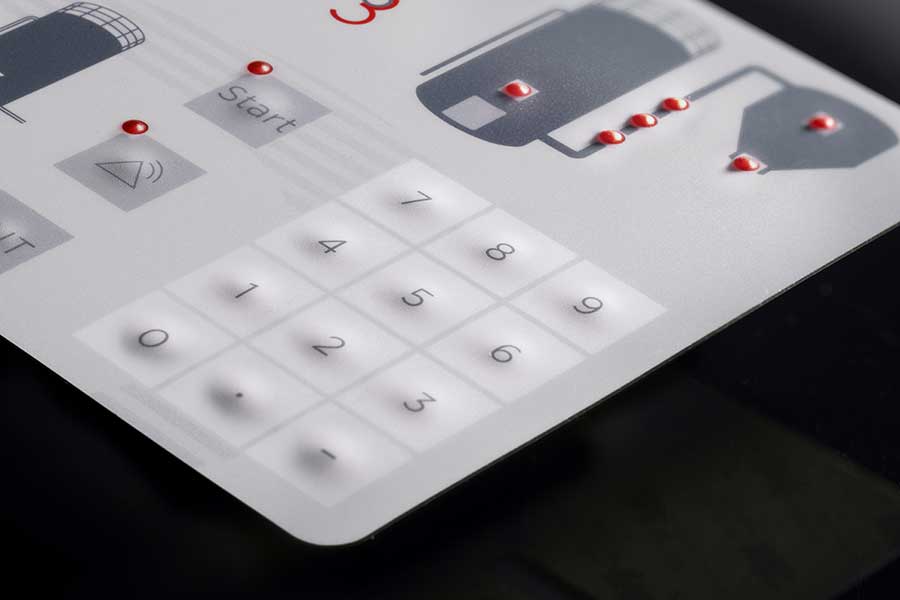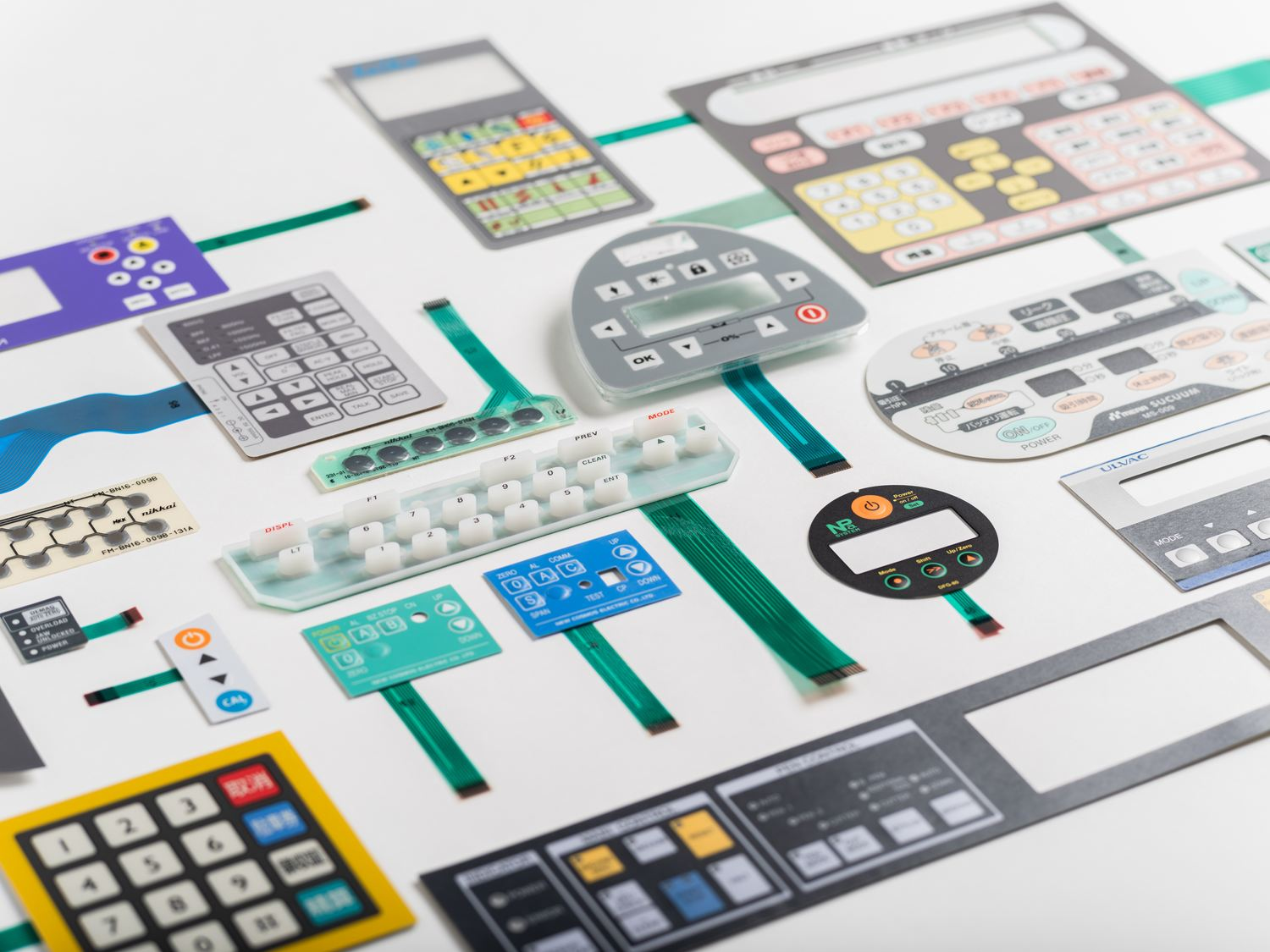How to Choose the Right Membrane Switch for Your Next Project
Wiki Article
The Benefits of Using Membrane Layer Changes in Consumer Electronic Devices
Membrane buttons are progressively recognized for their considerable advantages in consumer electronic devices, particularly in boosting individual communication and enhancing production procedures. Their capability to provide instinctive interfaces and responsive feedback can substantially decrease individual errors, while their light-weight construction and streamlined manufacturing actions add to cost-effectiveness and quicker market entrance. Moreover, the adaptability in design permits tailored services that fulfill diverse customer needs. The effects of these advantages extend beyond simple capability, hinting at a transformative potential for the future of electronic gadgets. What more advantages might become this modern technology develops?Boosted Customer Experience
In today's affordable landscape of customer electronic devices, improved user experience is vital; almost 85% of users prioritize instinctive user interfaces. Membrane layer changes play a critical duty in accomplishing this level of functionality.The responsive feedback provided by membrane layer buttons is vital for directing user activities, making certain that commands are signed up precisely. This feedback device enhances and lessens errors customer satisfaction, cultivating a favorable relationship in between the user and the tool. The adjustable nature of membrane changes permits producers to customize interfaces to certain user requirements, making tools extra available and welcoming.
Additionally, membrane layer buttons can integrate backlighting and visuals overlays, additionally boosting presence and use in diverse environments. This flexibility guarantees that gadgets continue to be functional and straightforward, regardless of the setup. On the whole, the integration of membrane changes right into customer electronics substantially improves individual experience, driving brand name commitment and complete satisfaction in an increasingly competitive market.
Economical Production
Consumer electronic devices suppliers are continuously looking for means to stabilize quality with affordability, and membrane switches provide an engaging solution for cost-effective production. membrane switch. These parts are inherently easier than standard mechanical switches, which decreases both production costs and complexity. The lightweight layout of membrane layer switches over permits reduced shipping expenses and simpler combination into compact tools, better boosting their allure in an affordable market
Producers can produce membrane layer buttons in high volumes, taking advantage of economies of scale. This automation ability ensures constant high quality while dramatically reducing per-unit expenses. Additionally, the products utilized in membrane layer switches, such as polyester and polycarbonate, are frequently cheaper than those needed for traditional switch modern technologies, adding to total expense savings.
The production process for membrane layer switches commonly needs fewer actions and less labor compared to various other switch kinds. This streamlined strategy not only conserves on labor costs yet likewise increases time-to-market, enabling firms to respond promptly to consumer need. Consequently, the mix of decreased product expenses and effective manufacturing processes settings membrane layer switches as a wise financial investment for producers intending to supply premium customer electronics at competitive cost factors.
Layout Adaptability and Customization
While standard mechanical buttons usually impose limitations on style because of their mass and called for placing mechanisms, membrane switches offer unmatched adaptability and modification options for consumer electronic devices. This innovative technology allows designers to create sleek, low-profile user interfaces that can seamlessly integrate right into different product aesthetics, from smartphones to kitchen appliances.Membrane layer buttons can be generated in basically any form or size, making it possible for manufacturers to customize the format to certain ergonomic and practical demands. This versatility not only enhances customer experience however likewise allows for artistic layouts that line up with brand identity. In addition, the usage of published graphics on membrane switches over uses the chance for dynamic shades and detailed styles, which can be easily changed description without substantial price effects.
Additionally, membrane layer switches can include multiple capabilities into a solitary layer, decreasing the demand for multiple parts and simplifying setting up processes. This streamlined design strategy reduces room and weight, making it optimal for compact customer electronics. Generally, the design versatility and modification abilities of membrane layer switches encourage producers to introduce, ultimately causing even more engaging and easy to use products.
Resilience and Integrity
As technology continues to progress, the longevity and reliability of membrane buttons have actually become vital factors to consider for manufacturers in the consumer electronics market. Membrane layer buttons are designed to endure extreme environmental conditions, consisting of temperature changes, wetness, and dirt direct exposure. Their robust building usually involves multi-layered materials that provide an effective barrier against contaminants, guaranteeing durability and constant performance.In addition to environmental resistance, membrane switches deal premium mechanical integrity. Unlike traditional mechanical buttons, which might wear with time, membrane switches utilize a sealed design that minimizes the threat of mechanical failing. The lack of moving parts not only boosts their life-span yet likewise decreases wear and tear, making them excellent for high-usage applications.
In addition, membrane layer switches can endure a substantial variety of actuations without loss of performance, frequently exceeding numerous cycles (membrane switch). This longevity equates to lower substitute expenses and decreased downtime for manufacturers and customers alike. On the whole, the combination of ecological strength and mechanical reliability makes membrane layer switches over a calculated choice for customer electronics, making certain that gadgets remain functional and effective throughout their desired life expectancy

Streamlined Item Growth
The longevity and integrity of membrane layer changes considerably contribute to structured product development in the customer electronic devices industry. By incorporating these buttons early in the style process, suppliers can minimize the complexity and variety of elements required in their items. more helpful hints Membrane buttons are light-weight and compact, permitting a lot more effective room use within gadgets, which can lead to streamlined assembly procedures.
The simplicity of manufacturing membrane layer buttons also plays an essential duty in item development. With modern-day printing methods and materials, manufacturing can be scaled effectively, reducing preparations and minimizing waste. This leads to lower production expenses, blog here improving total profitability.

Final Thought
In final thought, membrane switches over dramatically improve customer electronics by providing an enhanced user experience, economical manufacturing procedures, and versatile layout options. The assimilation of membrane changes stands for a calculated selection for producers looking for to optimize item design and performance.Membrane layer switches are progressively identified for their significant advantages in consumer electronics, specifically in boosting user interaction and simplifying manufacturing processes. Additionally, the materials utilized in membrane buttons, such as polyester and polycarbonate, are usually less pricey than those required for standard button modern technologies, contributing to total price financial savings.
The manufacturing process for membrane switches usually needs less actions and much less labor contrasted to other switch types. Unlike standard mechanical switches, which may use out over time, membrane changes use a closed style that reduces the danger of mechanical failure.In final thought, membrane changes considerably improve consumer electronics by providing an improved user experience, cost-effective manufacturing procedures, and functional style choices.
Report this wiki page